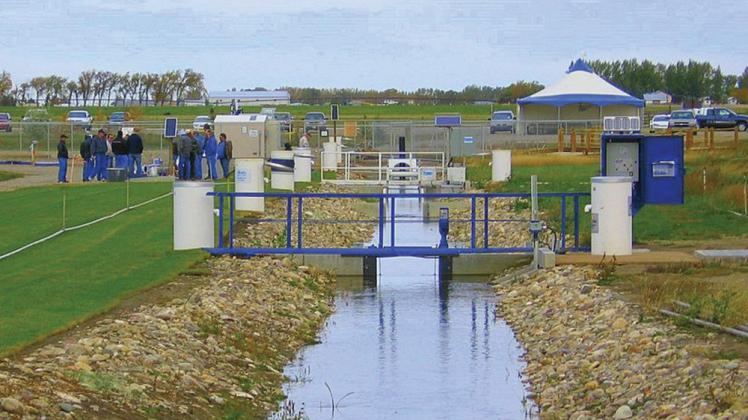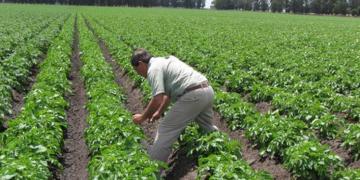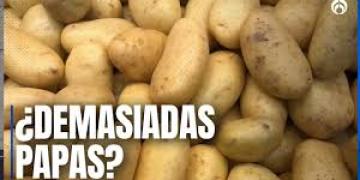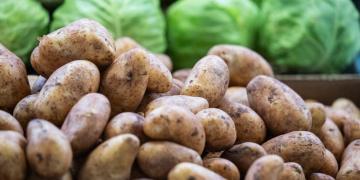Canadá: Irrigation technology centre has a wide range of research
Whether it’s research on potatoes, sugar beets, infrared sensors or nozzles, the goal is to get more crop per drop.

Just outside of Lethbridge, where ideal location, expertise and cutting-edge technology meet, we find the Alberta Irrigation Technology Centre (AITC).
The centre was established in 2000 as a partnership between Alberta’s irrigation industry and the provincial and federal Agriculture Departments.
“The main focus of the centre is to support improved water conservation, efficiency, and productivity with emphasis on adoption of technologies and agronomic practices for optimum irrigation water management by producers and irrigation districts,” said Rod Bennett, director of the Irrigation Management Section of Alberta Agriculture and Forestry.
The centre has two main components: A demonstration canal system and approximately 200 acres cropland. The demonstration canal has a flow measurement and testing facility and is managed by Alberta Agriculture and Forestry’s Basin Water Management Section.
The majority of the cropland is irrigated by one large and two smaller pivot watering systems. Each pivot has a variety of crops and experiments under it, and is managed on a four-year rotation schedule.
The large pivot has a variable-rate irrigation system that is being utilized for potato studies.
“For the last three years we’ve been working with McGill University,” said Bennett. “It’s had grad students working on various aspects of variable-rate irrigation and doing some testing and different treatments to try to improve our ability to develop near real-time prescriptions for irrigation water management.”
The objective is to optimize water management and crop yield for potatoes.
The centre has other potato research projects under that pivot system. Provincial potato scientist Michelle Konschuh from the Crop Diversification Centre in Brooks is focusing on fertilizer management for potatoes while the Potato Growers of Alberta is working on variety trials.
The AITC is participating in sugar beet research with the remainder of the large pivot.
“For the last seven years we worked with Lantic Inc. on zone tillage,” said Bennett. “The rows have a very narrow strip that is cultivated, and then the straw is left there to protect the emerging seedlings from wind. We tend to have lots of wind in southern Alberta, so we’ve used zone tillage to protect those seedlings and to evaluate whether there’s any advantage to do that over conventional tillage.”
Peter Regitnig, a research agronomist with Lantic, looks after the design and management of the projects, while AITC provides the irrigation and assists with harvest.
Other sugar beet projects include examining nitrogen fertilizer application rates and seedling emergence. Researchers will also be examining the relationship between fertilizer, final irrigation timing, and environmental conditions with respect to the sugar content of the beets — a key factor for producers, who are paid according to sugar content.
The centre is involved in a number of technology-based research projects. Researchers are currently evaluating a variety of different nozzle types, including low-energy precision application, where the drop tubes are lowered down very close to the soil surface. These have been utilized in other jurisdictions, including California.
“They’re mostly used in really high-value crops,” Bennett said. “We’re evaluating their use in some of our conventional crops as well. We’re looking at the water distribution using different nozzle types and different settings on the low-energy precision application nozzles.”
ADVERTISEMENT
They are also assessing wireless soil water sensors. There are a number of sensors that are now on the market that allow producers to track soil water status, allowing them to schedule their variable-rate irrigation based on these measurements.
AITC staff are also looking forward to an upcoming opportunity to work with Terry Howell of the U.S. Department of Agriculture Research out of Bushland, Texas, said Bennett.
This work will look at infrared sensors that mount on the irrigation pivot and can detect water stress in plants. They will be used in conjunction with soil water sensors. With real-time data from both of these types of sensors, the application rate will vary along the pivot and the different banks of nozzles. This allows the irrigator to meet the crop requirements and maintain uniform soil water content while optimizing crop yield.
“We’re very excited about this opportunity which we anticipate to explore in 2017,” Bennett said.
ADVERTISEMENT
In addition to all the research going on, the AITC welcomes a variety of interested parties to tour its facility. Groups include scientists, government officials, irrigation districts, students and commodity groups. (For more information, visit www.demofarm.ca.)
The Alberta Irrigation Technology Centre is a strong example of how various groups can work together to improve farming practices in Alberta and beyond.
“We have a variety of industry partners that are key to the success of what we do at the irrigation technology centre,” said Bennett. “Certainly without them we wouldn’t be able to do what we do.”
Fuente: http://www.albertafarmexpress.ca/2016/05/05/what-goes-on-at-the-alberta-irrigation-technology-centre/




